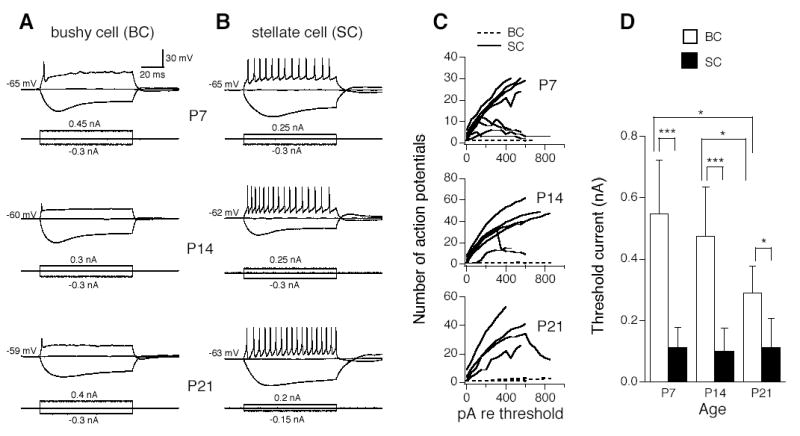Figure 1.

Electrophysiological identity of mouse AVCN neurons at ages P7, P14, and P21. A. Bushy cells fire single action potentials in response to prolonged (100 ms) depolarizing current injection. B. Stellate cells fire multiple action potentials distributed across the duration of the current injection. C. The number of action potentials was plotted against the amplitude of the injection currents relative to the threshold current (the minimum step current amplitude that is required to elicit action potentials) for individual neurons. Bushy cells show an almost flat function (dashed lines, n=4, 8, and 6 cells for P7, P14, and P21, respectively), whereas stellate cells show an increase in number of action potentials with increasing current amplitude (n=8, 8, and 4 cells for P7, P14, and P21, respectively). Some stellate cells show adaptation, i.e., a decrease in number of spikes in response to more depolarizing current steps. D. Bushy cells are less excitable than stellate cells, as evidenced by their significantly larger threshold currents (open and solid bars for bushy and stellate cells, respectively). While stellate cells lack developmental changes in excitability from P7 to P14 to P21, bushy cells become more excitable at P21 than P7/P14. Means ±standard deviations are shown. *p<0.05, ***p<0.001 (un-paired t-test).
